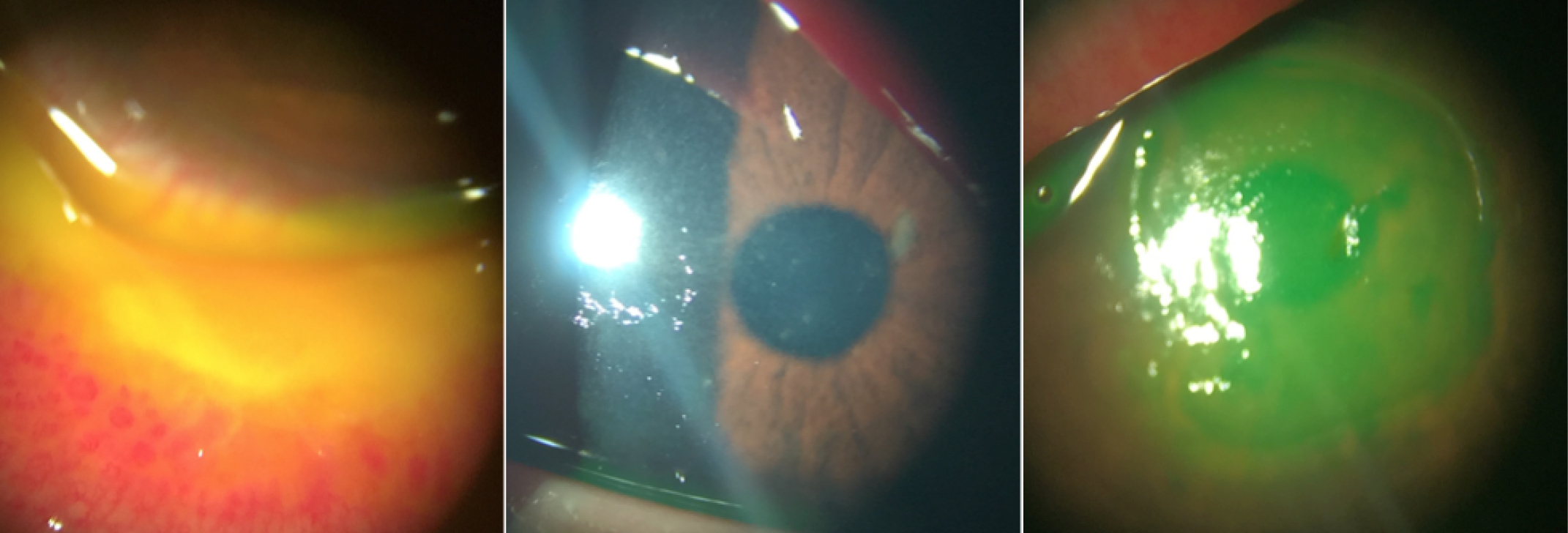
Steven M. Christiansen, MD
While admittedly a tech-centric, gadget-obsessed millennial, I am fairly certain (though not 100%) that I could live (perhaps rather unhappily) without technology. That being said, there is one particular gadget that is fun to use, has the potential to improve patient care, and has saved my skin several times recently.
Universal Smartphone Optics Adapter
A few months ago, I was in the emergency department at 3 a.m. seeing a 5-year-old child with bilateral conjunctivitis with pseudomembranes, subepithelial corneal infiltrates, and preauricular lymphadenopathy, the constellation of which was suggestive of epidemic keratoconjunctivitis. Knowing the staff physician on call might question my diagnosis the following morning, I reached for my $45 Carson Universal Smartphone Optics Adapter and documented, with impressive image quality, the findings I could clearly identify at the slit lamp. As expected, a few hours later, when questioned (interrogated?) about the patient, the iPhone photos of pseudomembranes and microscopic subepithelial infiltrates convinced my staff and others of my diagnostic assessment and treatment plan.

Photos taken using the smartphone optics adapter.
Many academic and private practice clinics employ highly skilled photographers to assist with slit-lamp photography, but learning to take slit-lamp photos using your own smartphone can save time, decrease overhead, and enhance patient care through improved documentation. And for today’s residents, fellows, and young ophthalmologists, documenting what you see on call may just be the difference between life and death; for that reason alone, my iPhone slit-lamp camera adapter is a gadget I simply cannot live without.
Steven M. Christiansen, MD, is an ophthalmology resident at the University of Iowa, Department of Ophthalmology and Visual Sciences. Dr. Christiansen may be reached at christiansen.steve@gmail.com; Twitter @eyesteve.

Arun C. Gulani, MD, MS
The one device I can’t live without is my iPhone. In my practice, where I blur the lines between advanced eye surgery and personal high fives, back-slapping, and fun, my iPhone has become indispensable for those very reasons. It blurs the lines between a communication gadget, a data recording system, a transcriptionist, a toric axis marking assistant in the preoperative room, a flashlight to see the air bubble of a DMEK in the recovery room, and a camera when patients request a photo/video with their first look after surgery. I can divide my iPhone’s application, or indispensability, for me at different levels.
Communication.
I communicate with colleagues via apps, with students via Eye Handbook (Cloud Nine Development), and with patients via reminder texts and mobile website queries worldwide.
Travel.
When traveling, I use my iPhone to help me navigate cultures, roads, languages, and currencies, as I teach all over the world.
Conferences.
Taking selfies on the podium creates an immediate bond between you and the audience and breaks the ice.
Patient education.
I use my iPhone to educate patients about their custom surgery techniques using 3D animations, in the preoperative room for axis marking, in the postoperative recovery room to see the eye, and to take fun pictures and videos that patients can share with their friends and families.
Audio.
The iPhone also serves as a backup audio player; I love playing spa-like music in my office at all times.
Teaching device.
Instant video sharing enables me to send the techniques that I present on the podium to colleagues who ask for them as well as prepare lectures and review video presentations during a flight.
Social.
The ability to connect with friends, colleagues, and even family all over the world as I land to teach in a particular country is a major plus—it has been amazing to catch up and very fun to make plans along the way. Medical resource. Medical references and apps serve to make me look knowledgeable and smart instantaneously.
Personnel.
Did I mention that Siri has been one of my longest-tenured employees? Honestly, we have had no HR or benefits to worry about … yet.
Arun C. Gulani, MD, is the Director of the Gulani Vision Institute in Jacksonville, Florida. He may be reached at gulanivision@gulani.com.

Cary M. Silverman, MD, MBA
When I am not in the office or the OR, the place you can most likely find me is on my bike. I bike 4 to 6 days a week and put in over 4,000 miles per year. I haven’t missed a week outside on the bike in more than 2 years—a pretty amazing feat given the past two winters we have had in the Northeastern United States!
Strava is an app that allows me to download and track all of my rides via my iPhone’s GPS functions. I can then analyze and compare my ride against my past efforts or those of friends that I follow. I can even share my rides with friends and followers throughout the world.
When I travel, I frequently take a bike with me. My son and his family live in Seville, Spain. Before my visits, I can explore new routes in and around Seville, download them to my Garmin device, and then follow them on my bike without fear of getting lost! Strava is definitely an app I couldn’t live without.
Cary M. Silverman, MD, MBA, is the Medical Director of EyeCare 20/20 in East Hanover, New Jersey. He may be reached at csilverman@eyecare2020.com; Twitter @TheLASIKdoc.

Divya M. Varu, MD
My Fitbit is with me 24/7. I have always loved getting fresh air and going for a run outside. I try to push myself to run faster and farther every day. After moving to a new city and having a baby, I found myself exploring new trails and routes, all with a stroller in tow. I didn’t know if I was getting an adequate workout or not. Everything changed when I got my Fitbit.
The Fitbit is a wristband that tracks your heart rate, level of activity, and sleep habits. It ensures that I make the most of my time running and at the gym. It encourages me to go the extra mile or to opt for the stairs rather than the elevator. I set target workout goals for myself, and the Fitbit is an accurate way for me to track my progress. It has really changed the way I think about fitness. An added bonus is that it has a cell phone caller ID; this feature comes in handy when my phone is at the bottom of my purse or if I’m in the midst of examining a patient when my phone rings.
Divya M. Varu, MD, is a cornea, cataract, and refractive surgeon at Dell Laser Consultants in Austin, Texas. Dr. Varu may be reached at dvaru@dellvision.com.

Shannon M. Wong, MD
Although it is not essential to my everyday life, the gadget that I have had the most enjoyment with outside of ophthalmology has been my Inspire 1 drone. It is essentially a flying camera that takes magnificent 12-megapixel photos in auto/manual mode and 4K HD video in all lighting environments.
The drone has expanded my understanding of flight, photography, videography, video production, and video- and photo-editing software. It allows me to see the world through the eyes of Superman! A YouTube page featuring my drone videos is available at https://www.youtube.com/channel/UCViYCt9ceUPzXp14iwoLyYQ
A video of fireworks over the University of Texas Tower, captured using the Inspire 1 drone.
Shannon M. Wong, MD, is an ophthalmologist at Austin Eye in Austin, Texas. He may be reached at shannon@austineye.com.





